2020-2021学年外研版 七年级英语下册Module 11 Unit 1They touch noses!课件(共20张PPT)
文档属性
| 名称 | 2020-2021学年外研版 七年级英语下册Module 11 Unit 1They touch noses!课件(共20张PPT) | 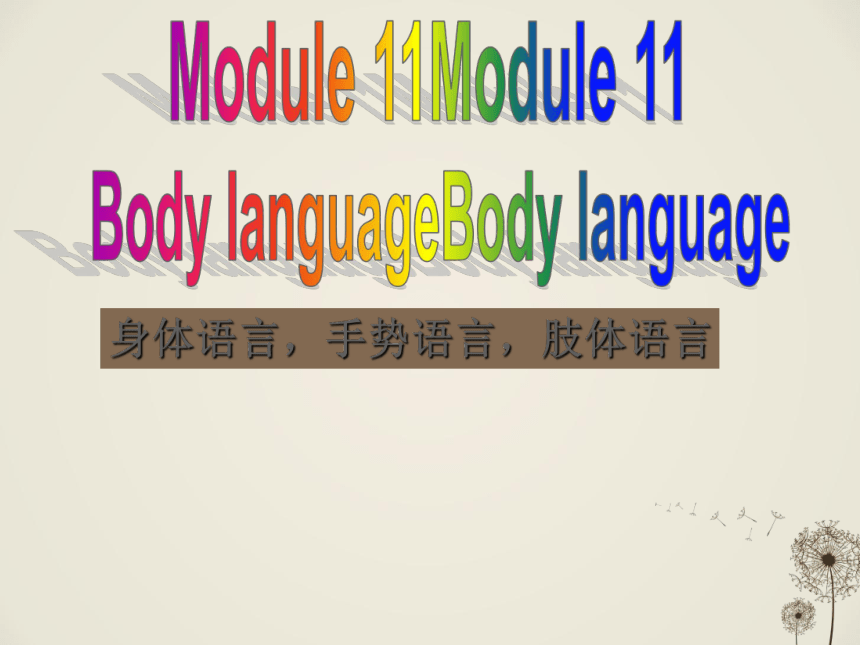 | |
| 格式 | ppt | ||
| 文件大小 | 2.7MB | ||
| 资源类型 | 教案 | ||
| 版本资源 | 外研版 | ||
| 科目 | 英语 | ||
| 更新时间 | 2021-06-03 09:53:10 | ||
图片预览

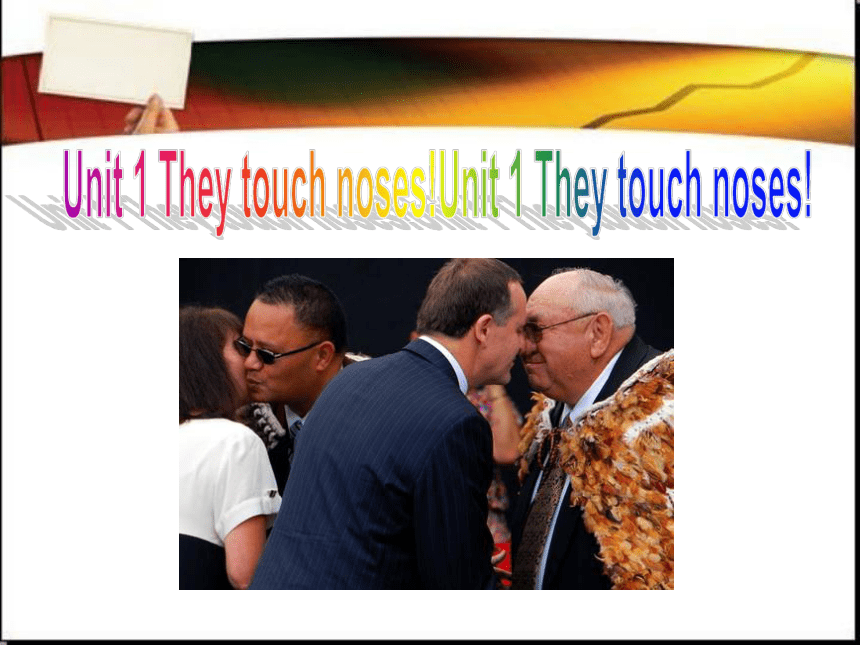

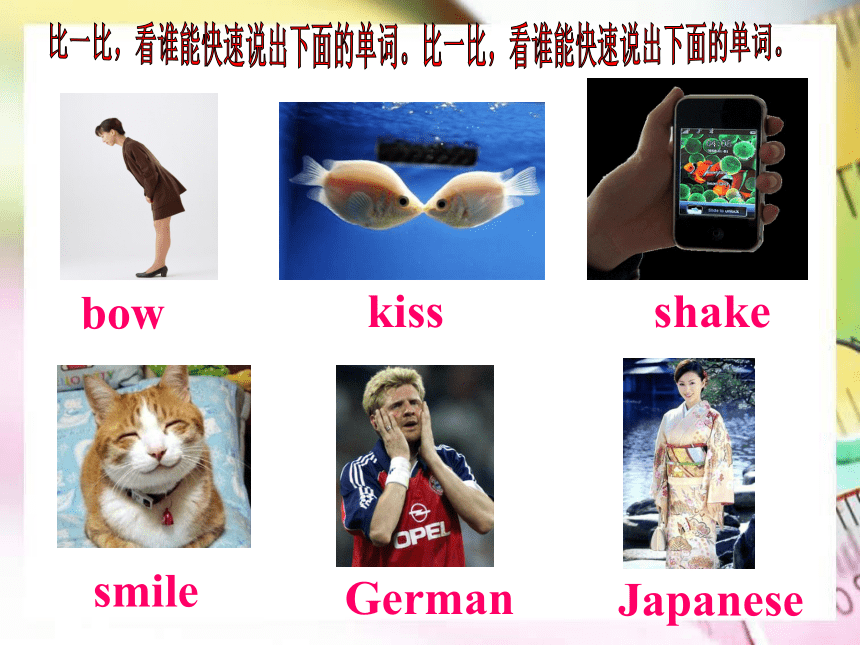
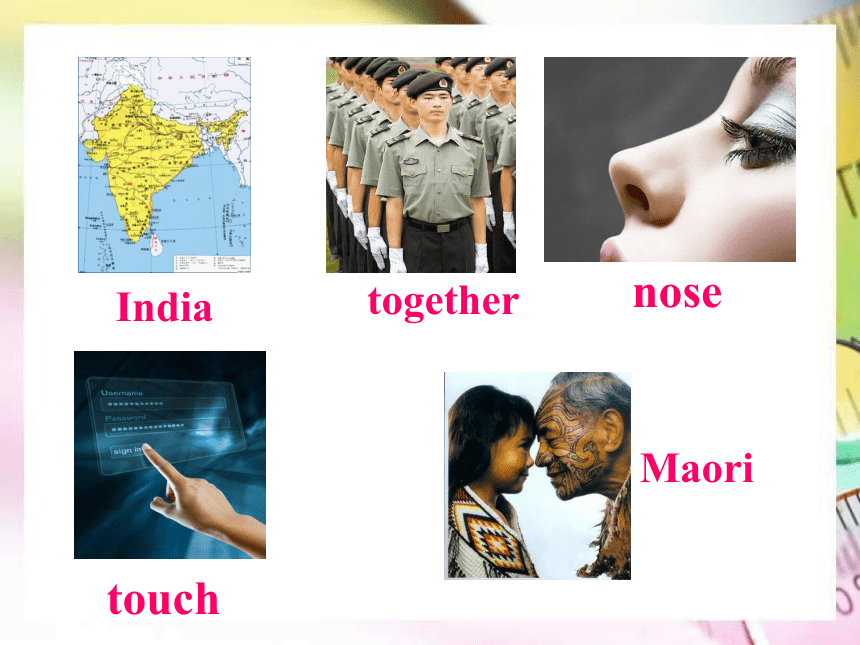
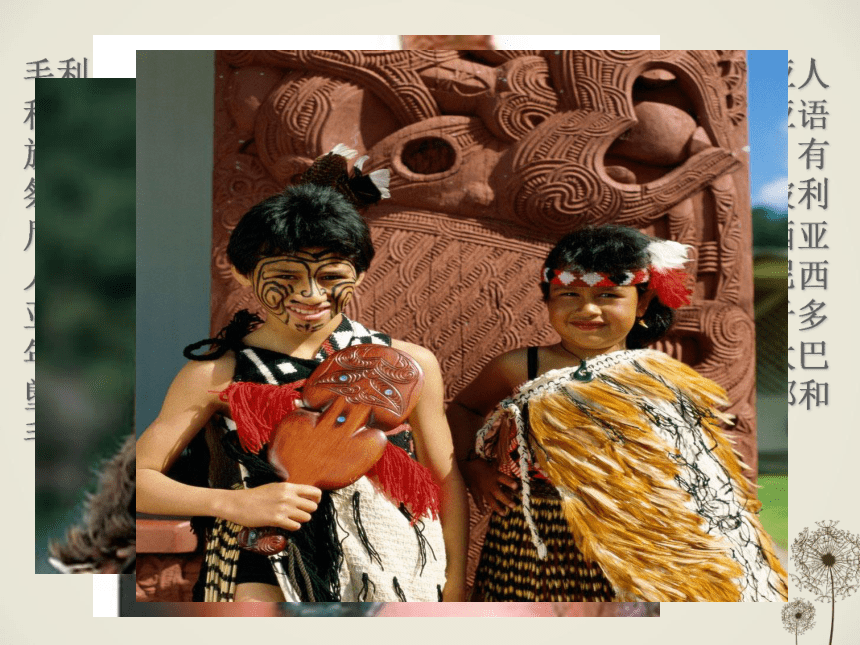
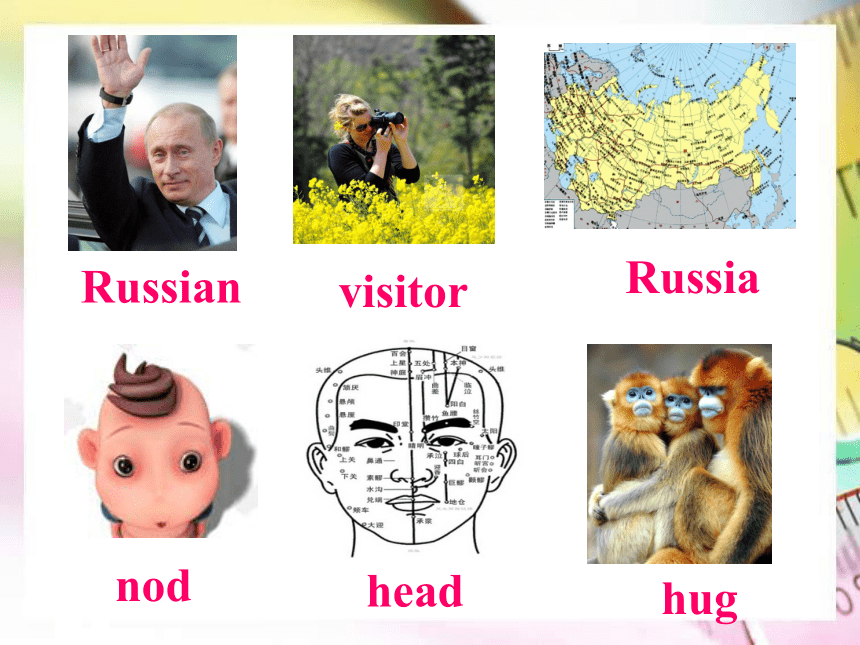
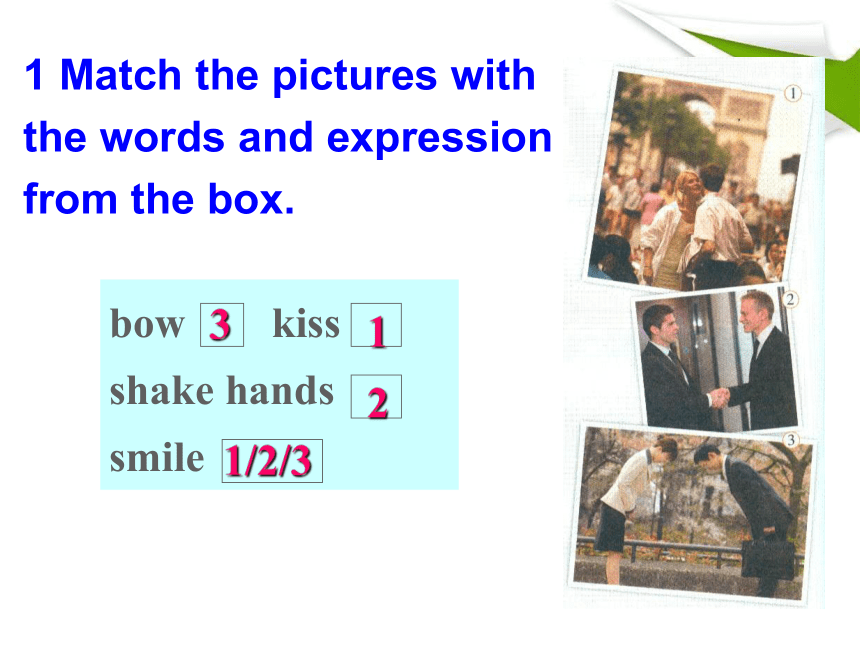
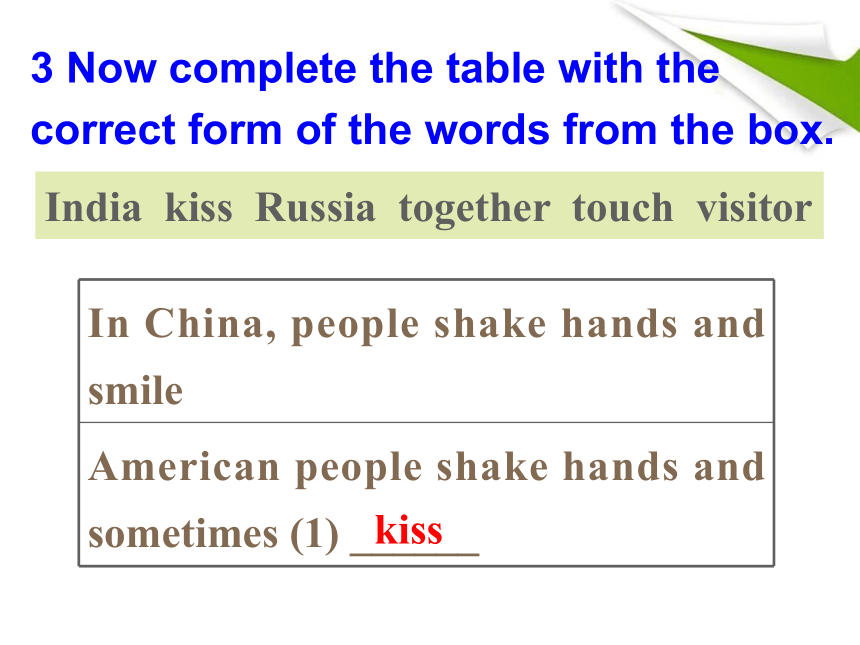
文档简介
(共20张PPT)
身体语言,手势语言,肢体语言
bow
kiss
shake
smile
German
Japanese
India
together
Maori
touch
nose
毛利人:新西兰的少数民族。属蒙古人种和澳大利亚人
种的混合类型。使用毛利语,属南岛语系波利尼西亚语
族。有新创拉丁文字母文字。信仰多神,崇拜领袖,有
祭司和巫师,禁忌甚多。相传其祖先系10世纪后自波利
尼西亚中部的社会群岛迁来。后与当地土著美拉尼西亚
人通婚,发生混合,因此在体质特征上与其它波利尼西
亚人略有不同。新西兰官方文献证明,毛利人是四千多
年前从台湾迁出的原住民,毛利人参访台湾阿美族太巴
塱部落祖祠,发现门窗开的位置、建筑梁柱等结构都和
毛利人聚会所相同。
Russian
visitor
Russia
nod
head
hug
bow
kiss
shake
hands
smile
3
2
1
1
Match
the
pictures
with
the
words
and
expression
from
the
box.
1/2/3
India
kiss
Russia
together
touch
visitor
kiss
In
China,
people
shake
hands
and
smile
American
people
shake
hands
and
sometimes
(1)
______
3
Now
complete
the
table
with
the
correct
form
of
the
words
from
the
box.
In
(2)
______,
people
put
their
hands
(3)
________
and
nod
their
heads
when
they
meet
(6)
________.
In
(4)
_______,
people
kiss
each
other
three
times
Maori
people
(5)
______
noses.
India
together
Russia
touch
visitors
People
in
different
countries
may
use
different
body
language
to
express
the
same
meaning
and
feelings.
When
in
Rome,
do
as
the
Romans
do.(入乡随俗)
In
Russia,
people
usually
kiss
three
times,
left,
right,
left.
time
在这里表示“次数”,是可数名词
time
作为“时间”,是不可数名词
2.
We
Chinese
often
shake
hands
and
smile.
shake
hands
“握手”。
shake
hands
with
sb.
“和某人握手”。
3.
名词的复数:
German
→
Germans
德国人
Japanese
→
Japanese
日本人
Chinese
Chinese
中国人
Russian
→
Russians
俄国人
Indian
→
Indians
印度人
4.
And
some
kiss
or
hug
each
other.
each
other
表示“彼此,互相”,
通常放
在动词后。
5.
In
India
people
put
their
hands
together
and
nod
their
heads.
put
…
together
表示“把……放在一起”。
6.
They
touch
noses!
touch
noses
“碰鼻子”。
Read
the
conversation.
What
you
do
and
say
when
you
meet....
your
teacher
your
parents
your
best
friends
your
best
friend's
parents
your
favourite
film
star
a
visitor
to
your
school
an
American
a
Russian
Some
______
visit
the
Great
Wall
every
year.
A.
visiter
B.
visitor
C.
visitors
2.
Chinese
often
_____
when
they
meet.
A.
shake
hands
B.
shakes
hands
C.
touch
noses
3.
They
help
______
when
they
are
in
trouble.
A.
each
B.
each
other
C.
the
other
4.
They
all
live
_____
in
a
three-bedroom
house.
A.
together
B.
with
C.
each
5.
Would
you
like
to
talk
with
_______?
A.
German
B.
Germans
C.
Germen
Make
a
dialogue
in
pairs
when
you
meet
a
foreigner.
身体语言,手势语言,肢体语言
bow
kiss
shake
smile
German
Japanese
India
together
Maori
touch
nose
毛利人:新西兰的少数民族。属蒙古人种和澳大利亚人
种的混合类型。使用毛利语,属南岛语系波利尼西亚语
族。有新创拉丁文字母文字。信仰多神,崇拜领袖,有
祭司和巫师,禁忌甚多。相传其祖先系10世纪后自波利
尼西亚中部的社会群岛迁来。后与当地土著美拉尼西亚
人通婚,发生混合,因此在体质特征上与其它波利尼西
亚人略有不同。新西兰官方文献证明,毛利人是四千多
年前从台湾迁出的原住民,毛利人参访台湾阿美族太巴
塱部落祖祠,发现门窗开的位置、建筑梁柱等结构都和
毛利人聚会所相同。
Russian
visitor
Russia
nod
head
hug
bow
kiss
shake
hands
smile
3
2
1
1
Match
the
pictures
with
the
words
and
expression
from
the
box.
1/2/3
India
kiss
Russia
together
touch
visitor
kiss
In
China,
people
shake
hands
and
smile
American
people
shake
hands
and
sometimes
(1)
______
3
Now
complete
the
table
with
the
correct
form
of
the
words
from
the
box.
In
(2)
______,
people
put
their
hands
(3)
________
and
nod
their
heads
when
they
meet
(6)
________.
In
(4)
_______,
people
kiss
each
other
three
times
Maori
people
(5)
______
noses.
India
together
Russia
touch
visitors
People
in
different
countries
may
use
different
body
language
to
express
the
same
meaning
and
feelings.
When
in
Rome,
do
as
the
Romans
do.(入乡随俗)
In
Russia,
people
usually
kiss
three
times,
left,
right,
left.
time
在这里表示“次数”,是可数名词
time
作为“时间”,是不可数名词
2.
We
Chinese
often
shake
hands
and
smile.
shake
hands
“握手”。
shake
hands
with
sb.
“和某人握手”。
3.
名词的复数:
German
→
Germans
德国人
Japanese
→
Japanese
日本人
Chinese
Chinese
中国人
Russian
→
Russians
俄国人
Indian
→
Indians
印度人
4.
And
some
kiss
or
hug
each
other.
each
other
表示“彼此,互相”,
通常放
在动词后。
5.
In
India
people
put
their
hands
together
and
nod
their
heads.
put
…
together
表示“把……放在一起”。
6.
They
touch
noses!
touch
noses
“碰鼻子”。
Read
the
conversation.
What
you
do
and
say
when
you
meet....
your
teacher
your
parents
your
best
friends
your
best
friend's
parents
your
favourite
film
star
a
visitor
to
your
school
an
American
a
Russian
Some
______
visit
the
Great
Wall
every
year.
A.
visiter
B.
visitor
C.
visitors
2.
Chinese
often
_____
when
they
meet.
A.
shake
hands
B.
shakes
hands
C.
touch
noses
3.
They
help
______
when
they
are
in
trouble.
A.
each
B.
each
other
C.
the
other
4.
They
all
live
_____
in
a
three-bedroom
house.
A.
together
B.
with
C.
each
5.
Would
you
like
to
talk
with
_______?
A.
German
B.
Germans
C.
Germen
Make
a
dialogue
in
pairs
when
you
meet
a
foreigner.
同课章节目录
- Module 1 Lost and found
- Unit 1 Whose bag is this?
- Unit 2 Are they yours?
- Unit 3 Language in use
- Module 2 What can you do ?
- Unit 1 I can play the piano
- Unit 2 I can run really fast
- Unit 3 Language in use
- Module 3 Making plans
- Unit 1 What are you going to do at the weekends?
- Unit 2 We're going to cheer the players.
- Unit 3 Language in use
- Module 4 Life in the future
- Unit 1 Everyone will study at home
- Unit 2 Every family will have a small plane.
- Unit 3 Language in use
- Module 5 Shopping
- Unit 1 What can I do for you?
- Unit 2 You can buy everything on the Internet
- Unit 3 Language in use
- Module 6 Around town
- Unit 1 Could you tell me how to get to the Nationa
- Unit 2 The London Eye is on your right.
- Unit 3 Language in use
- Revision module A
- Module 7 My past life
- Unit 1 I was born in a small village.
- Unit 2 I was born in Quincy.
- Unit 3 Language in use
- Module 8 Story time
- Unit 1 Once upon a time….
- Unit 2 Goldilocks hurried out of the house.
- Unit 3 Language in use
- Module 9 Life history
- Unit 1 He left school and began work at the age of
- Unit 2 He decided to be an actor.
- Unit 3 Language in use
- Module 10 A holiday journey
- Unit 1 What did you do?
- Unit 2 This morning we took a walk.
- Unit 3 Language in use
- Module 11 Body language
- Unit 1 They touch noses!
- Unit 2 Here are some ways to welcome them.
- Unit 3 Language in use
- Module 12 Western music
- Unit 1 It's so beautiful!
- Unit 2 Vienna is the centre of European classical
- Unit 3 Language in use
- Revision module B
